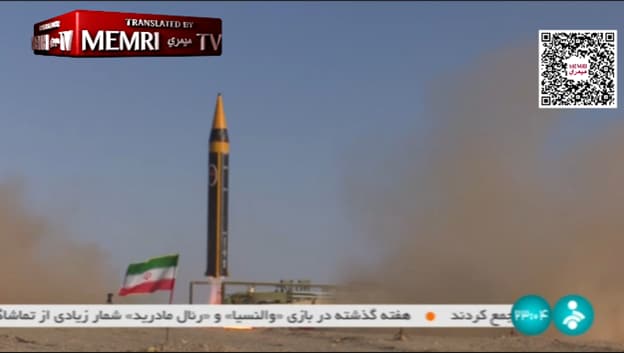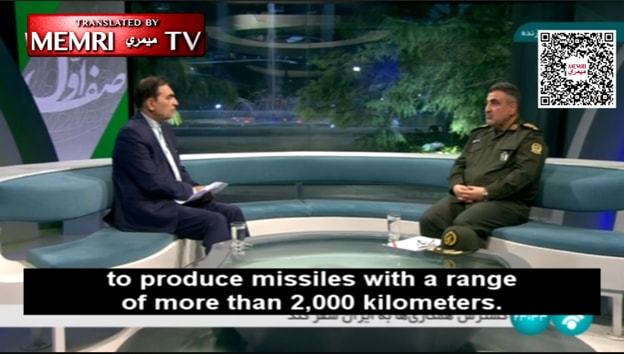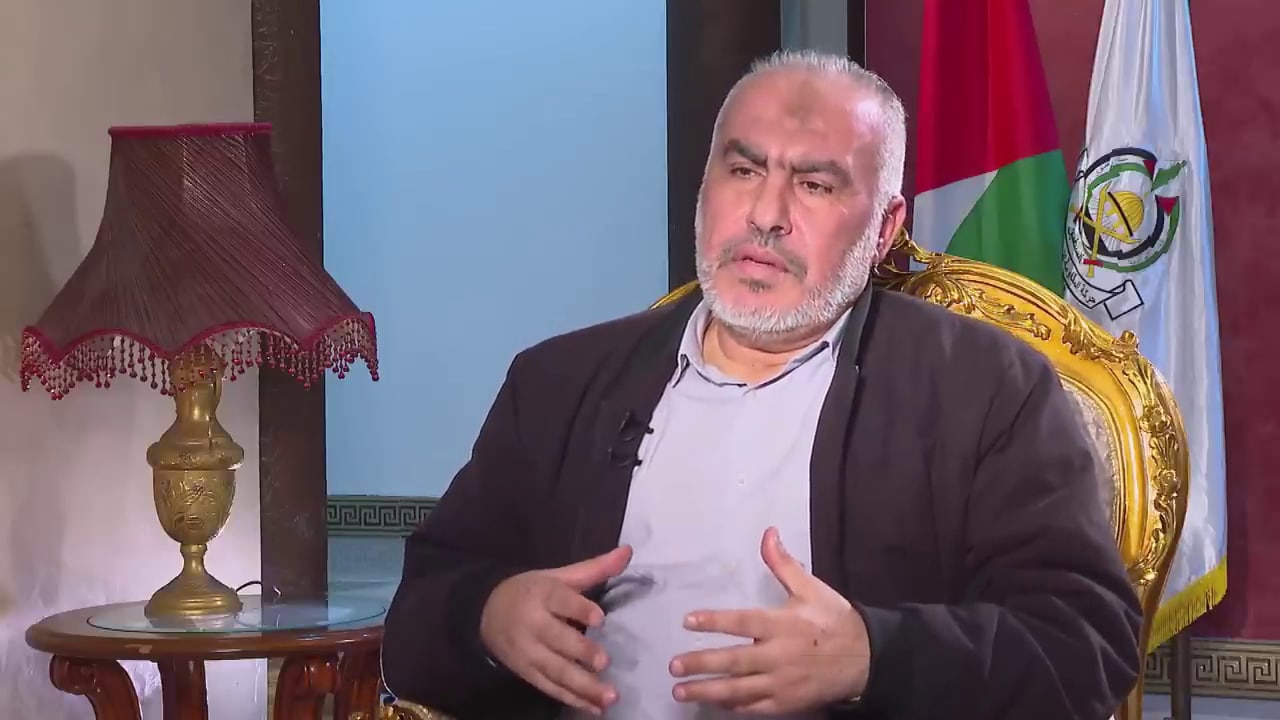
On May 26, 2023, IRINN TV (Iran) aired a report about the unveiling of the Khorramshahr-4 missile. The report stated that unlike Iran's liquid-fuel missiles, which take two hours to prepare for launch and which cannot store their own fuel, the Khorramshahr-4 missile can remain launch-ready for 10 years and can be launched within 20 minutes. According to Iranian Defense Minister General Mohammad-Reza Gharaei Ashtiani and Deputy Defense Minister IRGC General Mehdi Farahi, the missile has a range of 2,000 kilometers, can carry a 1.5-ton 4-meter-long guided warhead, is too fast to be intercepted by air defense system, and has an isolated guidance system that cannot be jammed by electronic warfare systems. In addition, General Farahi said that Iran has the technology to develop missiles with much greater ranges, but that its restrained national security policy precludes it from doing so, and he added that Iran will soon attain stealth technologies that will prevent defense systems such as Israel's Iron Dome and David's Sling from intercepting the missile.
Reporter: "Forty-one years after the liberation of Khorramshahr, the Khorramshahr missile is being unveiled today. According to the Ministry of Defense, on of the engineers who built this missile was born in 1984, in the city of Khorramshahr. He is here, and he explains about the missile's new features.
"This is a strategic missile. It is different from Iranian-made ballistic missiles that use liquid fuel, and it does not have guidance weights. In other words, the engine's exhaust emissions change the direction of [those] missiles and guide them. It takes two hours to prepare missiles with liquid fuel for launch, and they cannot store fuel. By contrast, the Khorramshahr-4 missile can remain launch-ready for 10 years, and it can be prepared for launch in 20 minutes."




[...]
Defense Minister General Mohammad-Reza Gharaei Ashtiani: "This missile has a range of 2,000 kilometers, and an explosive warhead with a very high yield."


Reporter: "The Khorramshahr-4 missile – unlike is predecessors, unveiled in August 2019 – has an accurate warhead that can be guided. Each Khorramshahr missile equal all three of the missiles that can be seen here, hitting Dimona simulation target, and it has a warhead that weighs 1.5 tons.



[...]
"This missile has not yet accomplished all the goals set by Iran's Islamic Republic in the field of missile-defense and deterrence, but at least its limits the military threats against Iran to those coming from beyond its 2,000 kilometer range. The Ministry of Defense says that by modifying the weight of the warhead, the range of the missile can change as well."
[...]
Deputy Defense Minister IRGC General Mehdi Farahi: "The warhead is about four meters long, and is guidance takes place at midcourse. At a specific altitude and speed, determined in advance, the fuselage detaches and only the warhead remains – the four-meter-long [warhead] I mentioned, which weighs 1.5 tons. As you can see, it enters midcourse, where the missile's main range is determined.


[...]
"During this time, the motors behind the warhead are involved in two processes. First, they offset the turbulence caused by the separation of the warhead and the motor. In the second phase, the other motors help it move towards the final guidance.
[...]
"Then comes the phase when the warhead wants to enter thick atmosphere, and get into the operational business. At this phase, the missile rapidly decelerates from its very fast Mach 16 midcourse speed to half the speed, approximately to Mach 8. Mach 8 is still very fast, and it is almost impossible for air defense systems to intercept the missile."
Interviewer: "We can see it on screen now."
Farahi: "Right. To prevent additional turbulence while entering the thick atmosphere, additional motors kick in and make it spin like a drill or a spinning wheel, in order to maintain its stability, to prevent it from deviating [from its course], and to maintain he accuracy achieved in midcourse all the way to the final target. The missile was designed for 2,000 kilometers, to strike within 30 meters of its target.


[..]
"In addition, the missile's guidance system is completely isolated, so that no electronic warfare action can impact it. This is because the guidance systems are no longer active, and do not perform electronic functions. It consists of one whole mechanical unit..."


Interviewer: "So how can it be guided at this stage, in order to hit the target accurately?"
Farahi: "As I've said, the beautiful thing about our Khorramshahr missile, is that its guidance and control systems [operate] already in the midcourse stage.


[...]
"We put a lot of work into this missile's warhead. We significantly reduced its RCS – Radar Cross Section – so that the enemy radar systems would not be able to detect it.
[..]
"We certainly have the ability and technology to produce missiles with a range of more than 2,000 kilometers. We are bound by the state's supreme policy. This policy, as stated by the Leader and the Supreme National Security Council, is that we must stop at a range of 2,000 kilometers. This means that everything we have has a range of 2,000 kilometers or less. The second point is that we have the ability [to produce missiles] with a larger range. If it becomes necessary, we can do it, but we have not done it so far and have no plans of doing it.


[...]
"Today, more than 8,000 companies across the country are providing us services in the field of [missile] production.


[...]
"Step by step, we are getting closer to stealth capability. Soon we will be able to say that no radar, Iron Dome, David Sling, or any other obstacle will prevent our missiles from reaching the target."




















